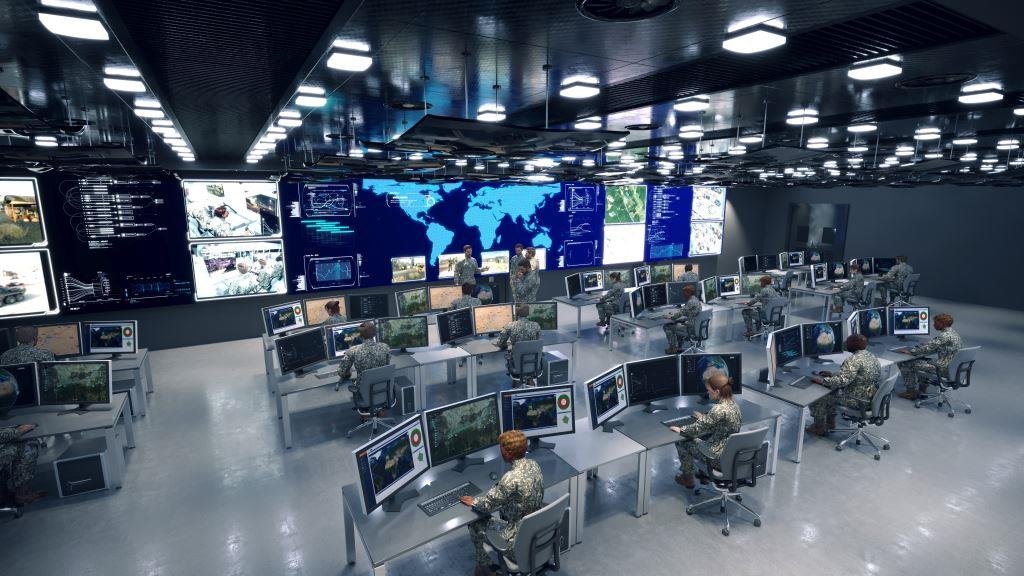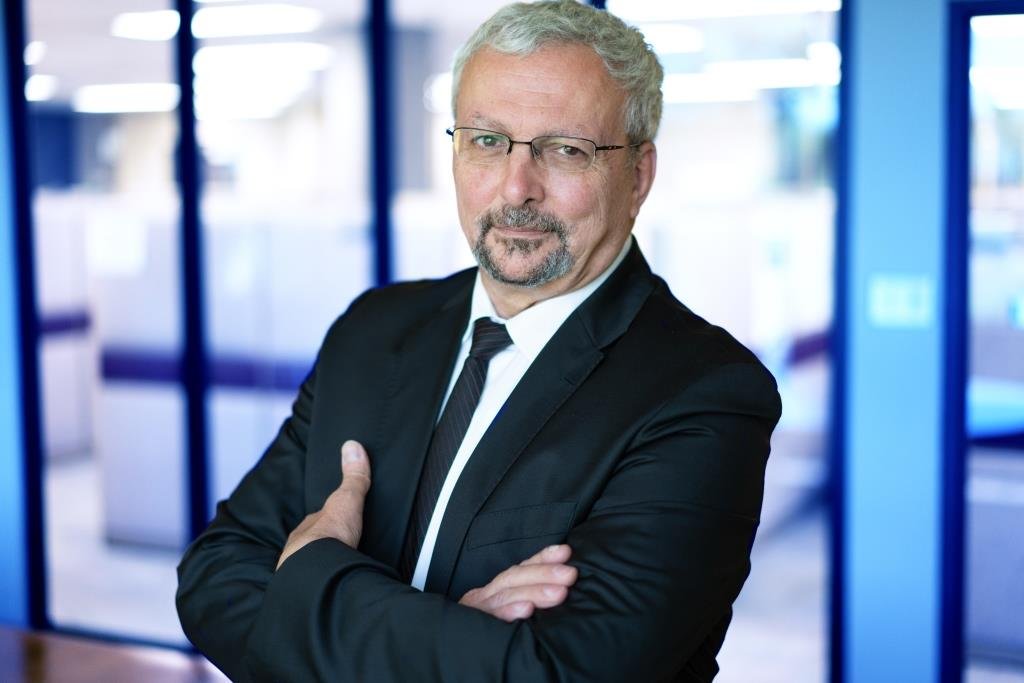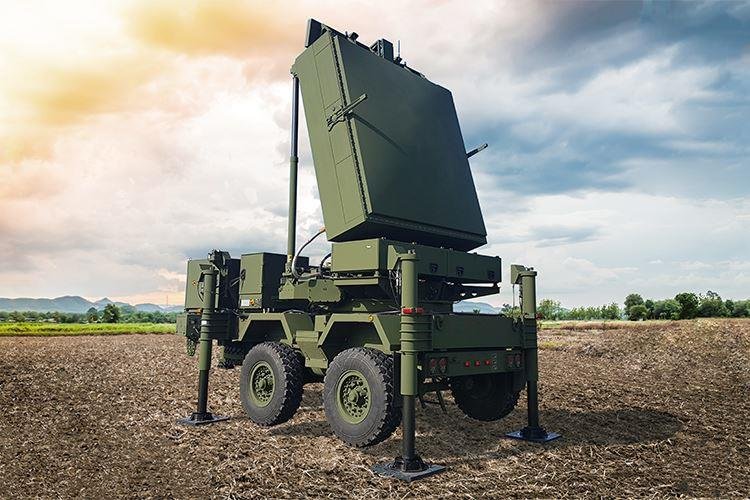COVER STORY - Rheinmetall Canada - Leveraging Canadian technology for LVCT
BY JOETEY ATTARIWALA
Rheinmetall Canada
From Radar Technology to it’s bid on Canada’s LVCTS, LVM & ERC projects, Rheinmetall stands ready to support Canada’s Armed Forces
 Rheinmetall Canada is part of the Rheinmetall Group which has been offering defence and security products since 1986. Located at their facilities in Saint-Jean-sur-Richelieu, Ottawa, and other offices throughout the world, Rheinmetall Canada’s 400 employees put their expertise to work in order to deliver solutions to the military.
Rheinmetall Canada is part of the Rheinmetall Group which has been offering defence and security products since 1986. Located at their facilities in Saint-Jean-sur-Richelieu, Ottawa, and other offices throughout the world, Rheinmetall Canada’s 400 employees put their expertise to work in order to deliver solutions to the military.
Rheinmetall Canada offers innovative solutions for vehicle systems and integration, air defence as well as weapon, command and communications, soldier and robotic systems. The company also manufactures critical airport ground support equipment for military and commercial clients around the world.
In addition to offering its own solutions, Rheinmetall Canada provides the Canadian market with its broad portfolio of system solutions, services and technologies in the areas of mobility, reconnaissance, management, effectiveness, simulation, and protection.
Speaking to CDR for this feature was Alain Tremblay, Vice-President, Business Development and Innovation at Rheinmetall Canada who said, “From a pursuit point of view, there’s plenty of Canadian programs right now that are in the making. Some of those are unforecasted operational requirements to support the Canadian troops deployed in Latvia, mainly on the air defence side, and there's also the Ground Based Air Defence (GBAD) program, which is a big program coming in the next year or two. We are focused on that as Rheinmetall Canada was founded on an air defence program called ADATS, so our expertise and our roots are with air defence, so it is very important for us to try to continue delivering that type of capability to the Canadian Armed Forces.”
“On the international scene there are different types of endeavors, but they are really around three specific products — the medium range radar, air start units, and unmanned ground vehicles, where we are global experts,” added Tremblay. “Those are our three pillars; we have a few other things, but those are the ones that are going to carry us into the future. In addition, there are opportunities related to some of the programs in Canada, such as the in-service support for the Leopard fleet, or the incoming programs related to the Logistic Vehicle Modernization or the Enhanced Recovery Capability, and a few smaller vehicle programs that are also going to be coming on the table over the next 12 to 24 months.”
RADAR TECHNOLOGY 
Rheinmetall Canada is an active contributor to Rheinmetall's air defence product portfolio. The company has a proven capability to design and develop air defence battle management systems that fully integrate weapons, sensors, communications systems, and battle management software to provide a cohesive and layered system. The Canadian Army, Royal Netherlands Army, Finnish Defence Forces, and Hellenic Army and Air Force all employ systems developed by Rheinmetall Canada for their specific air defence requirements.
Rheinmetall Canada was selected to provide the Canadian Armed Forces (CAF) with its new Medium Range Radar, a system that is based on Israel’s Iron Dome technology — a potent system which is often seen in reporting of the ongoing Israel / Hamas conflict where the Iron Dome system has been instrumental in intercepting a large amount of rockets and missiles. To enable the development of this radar, Rheinmetall Canada received a transfer of technology from ELTA of Israel.
“The Medium Range Radar, which is the radar that we provided to the Canadian Armed Forces about two years ago now, is the most advanced active 3D air defence and target acquisition radar that is part of the Canadian Army inventory,” said Tremblay.
According to Rheinmetall Canada, the solid-state radar has phased array modules that are sourced from Israel, but the rest of the system is assembled in Canada. The same product, with slightly different technology, is part of the largest ever contract secured by Rheinmetall Canada on the international scene, where essentially the same capability has been sold to the Hungarian Armed Forces.
“The same technology has been acquired by Hungary, which is good because that means that Rheinmetall Canada has a footprint in Hungary to support that project. There’s a very limited part that is done in Israel, and that’s the phased array modules, which is a highly specialized element of the antenna, but everything else is done in Canada — the mount, the command and control software, integration of NATO Identification Friend or Foe, the shelters, trailers, and the entire maintenance is done in Canada,” Tremblay told CDR. “We just delivered the first system to Hungary a few weeks ago. It's a very comprehensive package — I cannot give you the exact numbers mainly because of sensitivities, but it's basically a number of systems both for the Hungarian Air Force, and also a slightly different configuration for the Hungarian land force. This is a good commercial success on the international scene.”
Rheinmetall Canada is closely following opportunities to provide solutions for the CAF, particularly for GBAD which sees the company collaborating with Raytheon which is the prime. In this case, the Medium Range Radar could potentially cue GBAD effectors since the radar is part of the overall air defence command and control system that Canada uses.
LVCTS 
The Canadian Army’s Land Vehicle Crew Training System (LVCTS) is arguably the largest training and simulation project in the near term amongst all NATO partners. The LVCTS project seeks to provide a training system for the Light Armoured Vehicle (LAV) 6.0, the Leopard 2 Main Battle Tank, the Tactical Armored Patrol Vehicle, and support elements, and purpose-built infrastructure to house simulators. The project will be a training system which is connected via network, enabling the crews of the principle armoured combat vehicles to train as realistically as possible at the five major Canadian Army garrisons (Gagetown, Valcartier, Petawawa, Edmonton and Shilo).
“The sheer size and complexity of LVCTS is unique. Canada is looking for a very complex solution, with both high and low fidelity simulators being able to operate on networks across the country, and that’s why we have teamed with other big players in the domain,” said Tremblay. “In our case, we develop some low fidelity simulators for remote weapon stations and for UGVs [unmanned ground vehicles] and the like, so we have an expertise. But within the group, which is called the FORC3 Team, there’s four partners which are Lockheed Martin Canada, Lockheed Martin Training & Logistics Solutions, Rheinmetall Canada and also a sister company based in Berlin, Germany, which is Rheinmetall Electronic Solutions which specializes in simulation. So, we’re bringing all of those big players together, bringing their level of respective expertise, to build a system that is custom made and doesn’t exist today. Canada is really breaking new ground here with that level of integrated simulation, and training.”
Rheinmetall’s OSIRIS simulation system forms part of the LVCTS solution proposed by the FORC3 team.
“We’re bringing to Canada, a very unique team that has a level of expertise and also records of success in doing high-end simulations around the world; and bringing that team to build the best possible solutions to meet the unique Canadian Army requirements,” Tremblay told CDR. “Our system can scale to training an individual gunner on a platform, to the highest possible level where you could train a full Task Force prior to an operational deployment in a highly comprehensive simulation package that can be custom made for the theater of operations using the simulation centers to do mission rehearsals. Our solution will be very comprehensive, but also very agile.”
LVM & ERC
In their bid for the Logistics Vehicle Modernization contract, Rheinmetall Canada, Rheinmetall MAN Military Vehicles, and Navistar Defence Canada have joined forces as Team 45⁰ North. Each member brings unique strengths to the collaboration, enabling the team to be one of two finalists for the LVM project.
Drawing on more than 200 years of combined expertise in developing technical solutions in the realm of defence and vehicle programs worldwide, Team 45⁰ North combines two premier military vehicle manufacturers and a world-class integrator to offer the Canadian Army battle-tested trucks, purpose-built for military use. Rheinmetall has proposed the 8x8 HX family as the solution to the heavier end of the LVM requirement, while Navistar proposed a 6x6 vehicle for the smaller tier of the project.
“The field trials for the final competitors on the LVM were just completed a month or two months ago. The Canadian government is now reviewing the bids and making evaluations of both competitors,” said Tremblay. “We are one of only two competitors that made it to the field trial so it’s going to be interesting to see who’s going to win that one. We expect that the Canadian government will take up to the middle of next year to review the bids and do the notification of the winner but we are very confident that our solution is the best in a number of aspects including capability, cost and our sustainment solution, and that we would best complement the MSVS logistic truck program that they already have.”
When it comes to the Enhanced Recovery Capability (ERC) program, Rheinmetall Canada stands out as the only pre-qualified bidder. The project will replace the CAF's existing fleet of heavy tow trucks and associated equipment. The capability will enable modern technology to effectively recover newer and heavier armoured and logistics vehicles that cannot be recovered by the current fleet.
Rheinmetall has showcased its HX 10x10 Heavy Recovery Vehicle (HRV) which combines high off-road mobility with a heavy-duty recovery capability. It is able to recover vehicles in suspended as well as supported (underlift) tow mode. Highly mobile, the 10x10 vehicle features an underlift with a capacity of up to 15 tons as well as a recovery boom.
“In the specific case of the ERC project, the capability required was so unique that we were the only one that pre-qualified. We just delivered vehicles for field trials a few weeks ago. Our proposal and or our technical solution will now go through full testing and if we are compliant, then we could actually qualify ourselves to deliver that capability to the Canadian Forces,” said Tremblay.
“The ERC requirement will be for a little less than 100 vehicles and that’s because ERC is a highly specialized platform. The LVM on the other hand is a little bit more than 2,000 platforms, so it is a very large opportunity — we are very confident that we have the best solutions for both projects.”
AIR START KITS
Rheinmetall Canada is a global supplier of airport ground support equipment. This includes the MSU family of turbine-powered Air Start Units (ASU) for commercial and military purposes as well as the Unmanned Baggage Handler for the removal of suspicious luggage.
“An area where we’re doing well is with regards to air start units. It’s a dual purpose product that is used for civilian and military aircraft — we have delivered hundreds of systems, and are sustaining thousands around the world,” said Tremblay. “As a matter of fact, the United States Navy is using our air start units to start aircraft embarked on their aircraft carriers. We’re also adding FedEx which has a large fleet of its own aircraft. It truly is an international product that is provided by Rheinmetall Canada.”
New to their portfolio is Rheinmetall Canada’s eMSU, the first fully electric ASU on the market, which allows for carbon-free engine starts and reduction in overall ground operation emissions. It is powered by lithium-ion battery packs that ensure maximum running time and minimal energy loss. The eMSU requires very low maintenance and is designed to thrive in harsh conditions and requires no warm-up or cool-down phase.
UNMANNED GROUND VEHICLES
The third line of focus for Rheinmetall Canada is related to UGVs where Rheinmetall Canada has become a center of excellence for UGVs and platform agnostic autonomous capability in the land domain. This skill set comes after its 2019 acquisition of Provectus Robotics Solutions Inc., a Canadian expert for autonomous navigation.
“It's an emerging technology that Western military forces are exploring very aggressively. We all know the Canadian Forces are struggling for recruiting and manpower, which is common in a lot of the Western world forces. So anywhere you can use systems that are autonomous to reduce the demand on your manpower is very critical,” said Tremblay. “One of the biggest initiatives that we have is a logistic convoy. With UGV technology you could have a convoy of 10-15 logistic trucks with one crew for 10 trucks by creating a virtual train that can go from point A to point B in a safe manner. UGVs can also support dismounted troops, doing logistic resupply, medical evacuations, and are also very good for surveillance capabilities and can be weaponized.”
Rheinmetall Canada’s Mission Master Autonomous Unmanned Ground Vehicles (A-UGVs) is a well-known family of vehicles which have been designed to support military troops in dangerous missions, difficult terrain, and hostile weather conditions.
During CANSEC 2022, Rheinmetall launched its latest Mission Master XT - Rescue autonomous vehicle. The newly released rescue variant allows for in-field medical intervention and improves casualty care effectiveness no matter the terrain. Also on display was the Mission Master SP – Fire support with C16 AGL system, a low-profile platform optimized for stealth with low-signature electric drivetrain for silent operations.
Rheinmetall also launched the Mission Master CXT during the 2022 AUSA conference. The CXT is a rugged A-UGV designed to accompany troops in all kinds of missions and challenging environments. The CXT is a compact version of the XT, and is fitted with a hybrid diesel/electric motor which combines the power of a diesel engine with a silent electric motor, providing a total range of 450 km without refueling (including 50 km on batteries). In the most difficult of situations, it remains capable of transporting its full payload capacity of 1,000 kg.
Robust and highly reliable in the field, the Mission Master’s integrated lithium-ion batteries facilitate silent missions and are built to work in extreme hot or cold conditions.
It is clear that Rheinmetall Canada recognizes the importance of this capability, and it continues to invest extensively in it with up to 60% of discretionary research and development money going into autonomous ground vehicles capability.
There is no doubt that Rheinmetall Canada is a highly diversified company and has many opportunities in Canada and internationally. Concluding his thoughts, Tremblay said, “We are remaining true to what we are, which is a system integrator, first and foremost, and so far we’re doing extremely well. Our workforce is composed of around 400 people, and depending on our commercial success, this may grow close to 500 over the coming 12 to 24 months, so we are quite optimistic.”
Joetey Attariwala is CDR’s Senior Staff Writer

